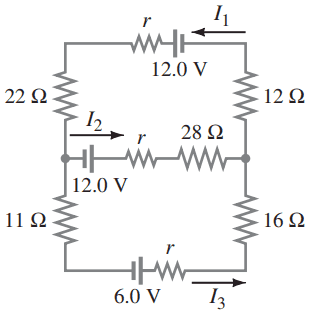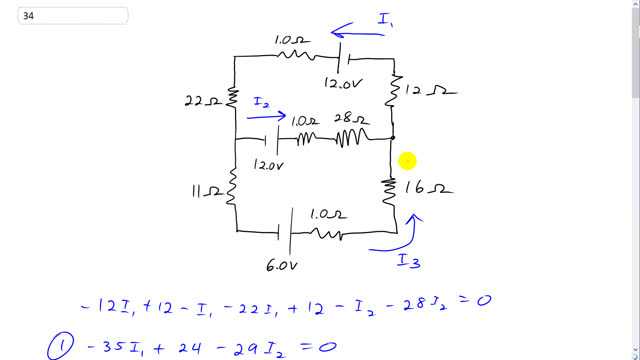
- Determine the currents , , and in Fig. 19–61. Assume the internal resistance of each battery is .
- What is the terminal voltage of the 6.0-V battery?


In order to watch this solution you need to have a subscription.
Hello,
I think you went over this in previous videos, but does it matter which "loops" you choose? For instance, I chose the top loop and the bottom loop instead of the top loop and larger outer loop, but my values were slightly off. Should I have gotten the same answer? Thanks in advance for your help.
Hi ctlawson, it doesn't matter which loops you choose. Your goal with 'choosing loops' is to create a collection of equations on which you can then do algebra to figure out the unknowns. You need as many equations as you have unknowns. Each loop is an example of Conservation of Energy, in that the total gain and loss in potential around a closed loop must equal zero. You begin the loop at some point, travel along, and then return to where you started, but if in doing so you arrived with a different amount of energy than when you started, then some energy must have been created or destroyed along the way, which is a violation of Conservation of Energy. Anyhow, I say all this to try and be convincing that the choice of loop doesn't matter. The discrepancy between our answers could be due to intermediate rounding error, or check that you included the resistors, or something like that.
All the best,
Mr. Dychko
Hi i have a quick question. If I1 points towards the left how does it in include 12OHMs
Hi bmuniz8219, that's a good question. Each current "starts" at a junction. While the diagram draws to the left along the very top, it's understood (even though not explicitly drawn) that the current originates at the junction below the resistor where the and currents also meet. So initially goes up through the resistor, and THEN, left along the top.
All the best with your studies,
Mr. Dychko
Hi Mr Dychko, should the I3 value collected in the 2nd loop's equation add up to -28 and not -27?
Additionally when solving for I1 should the addition of the two I1 coefficients not yield 2.5032?
Ah nevermind I realized that I was missing the one I1 on the left side. Thank you